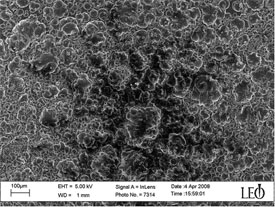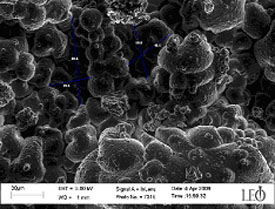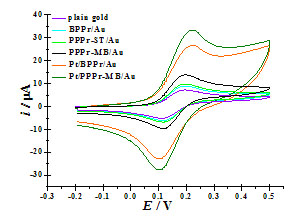The group has a number of projects running involving the development of clean energy production technologies; alongside the bio-photovoltaic approach we are also developing microfuel cells for the exploitation of alternative fuel sources. Fuel cells provide a more efficient method of electrical energy production as they convert chemical energy directly into electrical energy as opposed to other approaches such as the combustion engine which converts chemical energy to heat energy, which in turn is converted to mechanical energy which is finally converted to electrical energy. The combination of fuel cell technology with microfabrication techniques enables the rapid development of novel designs to enhance the device efficiency as well as providing a method for developing miniaturised power sources for portable devices. A schematic of a fuel cell is shown below.

The key goals of fuel cell research are to increase the activity and utilisation levels of the platinum catalyst while reducing the catalyst loading, resulting in simultaneously reducing costs and improving cell performance. One method of achieving this goal is by the introduction of a porous structure into the electrodes to provide a higher surface area for catalyst deposition; this creates a greater number of active sites at the electrode surface thus enhancing the electrical conductivity and reducing potential loses. Work in the group has focused on the development of porous conducting polymers for use in microfuel cells as they demonstrate high chemical and corrosion resistance, high strength to weight ratio, ease of fabrication, low energy cost per unit, light weight, and design flexibility compared with alternative semiconductor and metallic materials making them a highly desirable electrode material.
The porous conducting polymer electrodes have been characterised using a number of experimental techniques including:
-
Scanning electron microscopy (SEM)
-
Voltammetry
-
Electrochemical impedance spectroscopy
Some of the SEM images of the porous structure of polypyrrole are shown below:


The voltammetric behaviour of the polypyrrole electrode (see below) demonstrated that it could be used as a suitable electrode material for use in fuel cells:

A number of strands for the project are currently being developed, including:
- Development of novel devices using micropatternable proton exchange membranes
- Development of conducting photoresists
- Development of a numerical model to aid the optimisation of the device
- Use of confocal microscopy to quantify transport processes within the device

